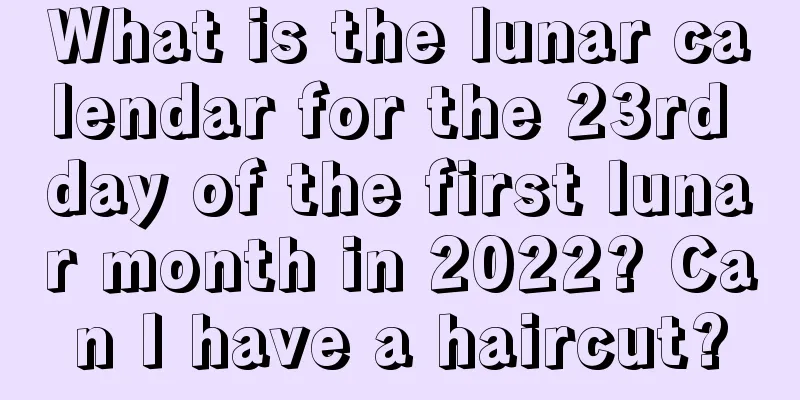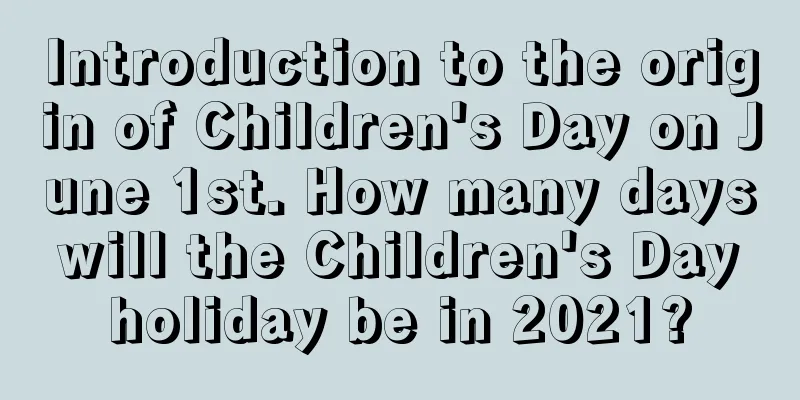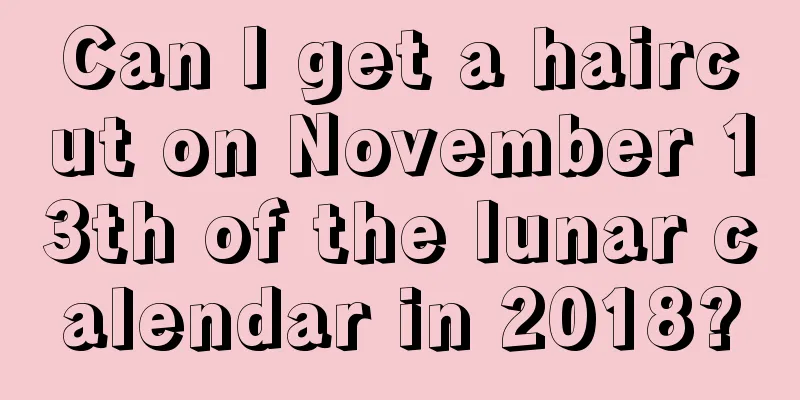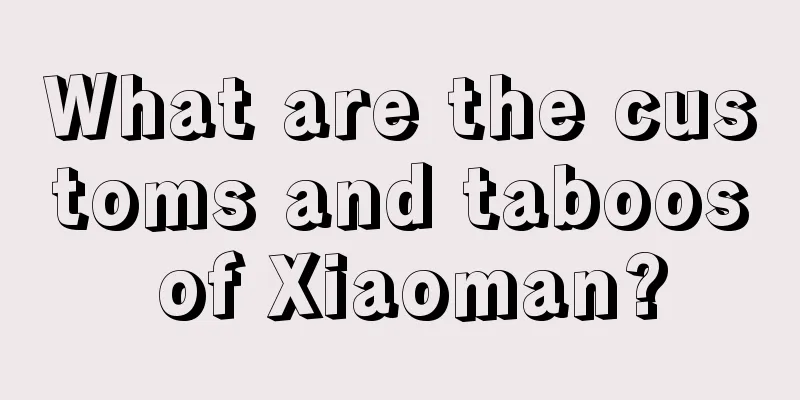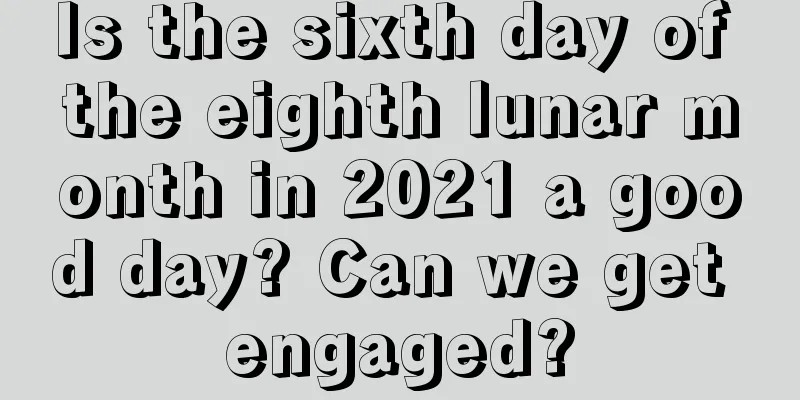What is the Spring Equinox? What are the customs of the Spring Equinox?
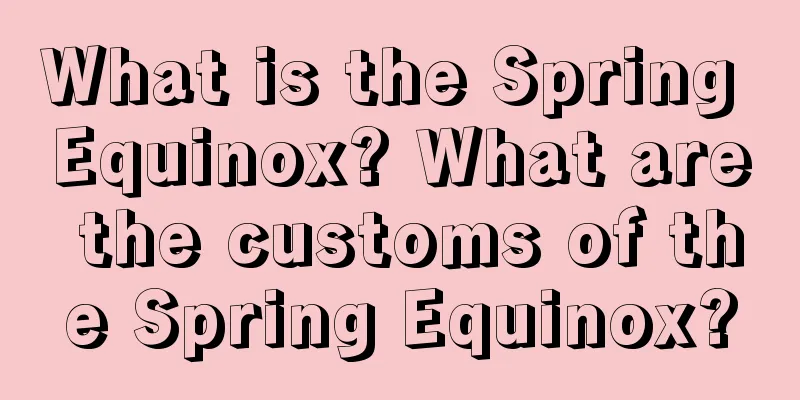
Introduction: We all know that the Spring Equinox is one of the 24 solar terms. At this time, the sun is directly above the equator and the southern hemisphere enters the Autumnal Equinox, while the northern hemisphere enters the Vernal Equinox. So what does the Spring Equinox, one of the twenty-four solar terms, mean? What are the customs regarding the Spring Equinox? What is the origin of the Spring Equinox? Let’s follow the editor to learn more about it! Mr. Shui Mo summarized many festivals and solar terms in the second month of the lunar calendar to help people better understand how to face every day in February.What does the 24 solar terms Spring Equinox mean?The Spring Equinox is the midpoint of the ninety days of spring. One of the 24 solar terms, it falls on March 20 of the Gregorian calendar every year when the sun is at 0° of ecliptic longitude (the vernal equinox). On the day of the vernal equinox, the sun shines directly on the earth's equator. The seasons in the northern and southern hemispheres are opposite. In the northern hemisphere, it is the vernal equinox, and in the southern hemisphere, it is the autumnal equinox. The Spring Equinox is the New Year in Iran, Türkiye, Afghanistan, Uzbekistan and other countries, and has a history of 3,000 years."Collected Explanations of the Seventy-two Seasons of the Lunar Calendar" states: "In the middle of February, the word fen means half, which corresponds to the middle of a ninety-day period, so it is called fen. Autumn has the same meaning." "Spring and Autumn Fanlu: Yin Yang Out and In, Parts 1 and 2" states: "The spring equinox is when yin and yang are half and half, so the day and night are equal and the cold and heat are balanced." The Spring Equinox is also a festival and sacrificial celebration. Ancient emperors had the ritual of worshiping the sun in spring and the moon in autumn. The Emperor of Zhou Dynasty offered sacrifices to the Sun at the Sun Altar. "Book of Rites": "Sacrifice the sun on the altar." Kong Yingda's commentary: "It refers to the vernal equinox." Pan Rongbi of the Qing Dynasty wrote in The Chronicles of the Capital: “Sacrifices to the sun on the Spring Equinox and to the moon on the Autumn Equinox are grand national ceremonies, and scholars and common people are not allowed to offer sacrifices on their own. What are the customs about the Spring Equinox?In folk activities, it is generally regarded as the official start of outing. Activities include:(a) Flying kites. Women and children fly kites. And write blessings on the kite hoping that the gods in heaven will see them. (2) Wearing flowers in one’s hair and drinking wine: men, women, young and old all wear flowers in their hair. (3) Picking wild vegetables in the wild: Zhu Shuzhen's "Ten Poems on Spring Days": I have no mood to write or play the piano, and I am not in the mood to go outing and pick vegetables. In terms of food, there are spring vegetables, spring soup, spring wine, etc. Egg StandOn the vernal equinox every year, tens of millions of people around the world will do the "egg standing up" experiment. It is still difficult to verify how this game, which is called a "Chinese custom", became a "world game". However, the gameplay is simple, easy and fun: choose a smooth and symmetrical fresh egg that has been laid just four or five days ago, and gently stand it upright on the table. Although there are many failures, there are also many successes. The Spring Equinox becomes the best time to play the egg-standing game, hence the saying "When the Spring Equinox comes, the eggs are pretty." The upright egg looks so beautiful.The secret of standing eggs upright: Why is it easy for eggs to stand upright on the vernal equinox? Although there are many theories, there are many scientific reasons behind them. Firstly, the vernal equinox is a day when the day and night are of equal length in the northern and southern hemispheres. The Earth's axis, which is tilted at 66.5 degrees, and the orbital plane of the Earth's revolution around the sun are in a state of relative balance of forces, which is conducive to standing the egg upright. Secondly, the vernal equinox is in the middle of spring, which is neither too cold nor too hot, with red flowers and green grass. People feel relaxed, their minds are quick, their movements are agile, and it is easy to successfully stand an egg upright. More importantly, the surface of the egg is uneven, with many protruding "hills". The "mountain" is about 0.03 mm high, and the distance between the peaks is between 0.5 and 0.8 mm. According to the principle that three points form a triangle and determine a plane, as long as we find three "hills" and the triangle formed by these three "hills", and make the center of gravity of the egg pass through this triangle, then the egg can stand upright. In addition, it is best to choose eggs that are 4 to 5 days old. This is because the yolk band of the egg relaxes, the yolk sinks, and the center of gravity of the egg drops, which is conducive to the egg standing upright. Standing an egg upright not only has many scientific principles, but also contains many rich and profound philosophical ideas. The famous Italian navigator Columbus crossed the vast Atlantic Ocean and discovered the New World of America. Some people disagreed with his discovery and even ridiculed it as "purely accidental." At a celebration party, Columbus suggested that the gentlemen, ladies and girls at the banquet try to stand the egg on the table upright, but no one succeeded. Columbus said, watch me show. He cracked the egg, the shell broke, and the egg stood upright. Then he said, this is what I discovered, it is indeed very easy, but why can't you do it? The egg's symmetrical and smooth curves are the reason why it is difficult to stand upright, but also the reason for its charm. Leonardo da Vinci, the famous European Renaissance painter, practiced drawing egg curves every day for more than two years without sleep or food. This laid a solid foundation for his later successful creation of Mona Lisa's mysterious smile. In my country, people call the face "cheeks" and use the egg shape as the standard for whether the face is beautiful or not, which fully demonstrates the Chinese people's superb level of aesthetic appreciation and the aesthetic attributes of the egg shape. However, for a long time, people could not find the mathematical expression of the egg-shaped curve, and even mathematicians could only approximate the egg-shaped curve with a ruler and compass. No wonder the painter who has painted thousands of egg circles also said that no two are exactly the same. It was not until modern times that mathematicians found the following mathematical equation of the egg curve: x^2/a^2 + y^2/(ky+b)^2 = 1, where |k|>1, finally solving the problem of egg curve drawing that has puzzled generations. Today, egg-shaped cars, airships, bridges, tunnels, stadiums, concert halls and other buildings can be seen all over the world. They perfectly combine science and culture, science and art, and science and aesthetics. That is, it is drawn by computer, and the specific equation is (x^2 + z^2) / 16 + y^2 / (0.2y + 5)^2 = 1 Eat spring vegetablesLingnan customs In the past, the Xie family in Cangcheng Town, Kaiping, one of the Four Counties (plus Heshan, the Five Counties), had an unofficial custom called "eating spring vegetables on the Spring Equinox". "Spring vegetable" is a kind of wild amaranth, which the locals call "Spring Green Artemisia". On the day of the Spring Equinox, the whole village goes to pick spring vegetables. When searching in the fields, most of the plants you see are light green, thin, about the length of a palm. The harvested spring vegetables are usually boiled with fish fillets in a soup called "spring soup". There is a saying that goes: "Spring soup cleanses the internal organs and cleanses the liver and intestines. The whole family, young and old, are safe and healthy." Since spring, people have been praying for peace in their families and good health.Sending Spring OxThe Spring Equinox is about to arrive, and people will send pictures of the Spring Ox to every household. The picture is made of red or yellow paper with the lunar calendar dates of the whole year printed on it, as well as a picture of a farmer plowing the fields. It is called the "Spring Ox Picture". The people who sent the pictures were all folk singers who were good at speaking. They mainly talked about spring ploughing and auspiciousness in accordance with the farming season. Every time they went to a house, they would be inspired by the scene and say whatever they saw, until the owner was happy and gave them money. Although the words come out casually, every sentence is rhythmic and pleasant to the ear. Commonly known as "Shuochun", people who talk about spring are called "Chunguan".Sticky bird mouthOn the day of the Spring Equinox, farmers have a holiday according to custom. Every family eats rice dumplings, and they also cook a dozen or twenty or thirty rice dumplings without fillings, stick them with thin bamboo forks and place them on the edge of the field outdoors. This is called "catching the sparrows' beaks" to prevent sparrows from destroying the crops.Flying a kiteThe spring equinox is also a great time for kids to fly kites. Especially on the day of the Spring Equinox. Even the adults get involved. There are many types of kites, including the Wang-shaped kite, the silver carp kite, the squinting moth kite, the thunder worm kite, and the moonlight kite. The biggest ones are two meters high, and the smallest ones are two or three feet high. There are kites for sale in the market, most of which are relatively small and suitable for children to play with, but most are made by themselves and are larger. When flying them, people compete with each other to see who can fly the highest.Spring FestivalOn the Spring Equinox in February, people start sweeping tombs and worshipping ancestors, also known as the Spring Festival. Before tomb sweeping, a grand ceremony of ancestor worship is held in the ancestral hall, with pigs and sheep being slaughtered, drummers playing music, ritual students reading sacrificial texts, and leading the three offerings ceremony. When tomb sweeping begins on the Spring Equinox, the first things people do are to sweep and offer sacrifices to the tombs of the founding ancestors and distant ancestors. The entire clan and the entire village are mobilized, and the procession is large, with often hundreds or even thousands of people. After sweeping the tombs of the founding ancestor and distant ancestors, each room will then sweep and offer sacrifices to the tombs of their ancestors, and finally each family will sweep and offer sacrifices to the family's private tomb. In most Hakka areas, spring ancestor worship and tomb sweeping begin at the Spring Equinox or earlier and are completed by Qingming Festival at the latest. There is a saying in various places that the tomb doors will be closed after Qingming Festival and the heroic spirits of the ancestors will no longer be able to benefit from it.WorshipFolk festivals around the Spring Equinox include the birthday of King Kaizhang on February 15th: King Kaizhang, also known as "King Chen", was a military scholar in the Tang Dynasty, Chen Yuanguang, who made great contributions to Zhangzhou and became the patron saint of Zhangzhou after his death. February 19th is the birthday of Guanyin Bodhisattva. On every birthday, many believers eat vegetarian food and go to various Guanyin temples to worship. February 25th is the Sanshan King Memorial Day: The Sanshan King refers to the mountain gods of Dushan, Mingshan and Jinshan in Jieyang County, Chaozhou Prefecture, Guangdong Province. In the early years, they were regarded as patron saints by Chaozhou Hakka immigrants, so their believers are mainly Hakka people.Memorial DayIn the Zhou Dynasty, there were festival ceremonies on the Spring Equinox. "Book of Rites": "Sacrifice the sun on the altar." Kong Yingda's commentary: "It refers to the vernal equinox."The Temple of the Sun is located on the east side of Ritan Road, southeast of Chaoyangmen outside Beijing. It is also called the Temple of the Sun. It was the place where the emperors of the Ming and Qing dynasties worshipped the Great Ming God (the Sun) on the day of the Spring Equinox. The morning sun was set at the hour of Mao on the Spring Equinox. In the years of Jia, Bing, Wu, Geng and Ren, the emperor would personally offer sacrifices, while in other years, officials would offer sacrifices on his behalf. The places for memorial services for ancient emperors were mostly located in the suburbs of Beijing. The Sun Temple in Beijing was built during the Yuan Dynasty. The current Sun Temple in Beijing was built in the ninth year of the Jiajing reign of the Ming Dynasty (1530 AD). It is surrounded by a square outer wall. Before each sacrifice, the emperor would come to the Jufu Hall inside the North Altar Gate to rest, then change clothes and go to the Chaori Altar to perform the sacrifice ceremony. The Chaori Altar is located in the southern part of the entire building, facing east and west. This is because the sun rises from the east and people have to stand in the west and salute to the east. The altar is circular, with one level platform and a diameter of 33.3 meters. It is surrounded by a low wall and has a Lingxing Gate in the east, south and north. The main gate is on the west side, with three Lingxing gates to distinguish them. In the middle of the wall, there is a square platform built with white stones, called the altar of worship. It is 1.89 meters high and 64 meters in circumference. When it was built in the Ming Dynasty, the altar was built with red glazed bricks to symbolize the Ming god, the Sun. This was originally a very romantic arrangement, but in the Qing Dynasty it was paved with square bricks, which made the Sun Altar less attractive. Although the memorial day is not as grand as the ceremonies of offering sacrifices to heaven and earth, the ceremony is also quite grand. When the emperors of the Ming Dynasty offered sacrifices to the dead, they would use jade and silk as offerings, make three offerings, play seven pieces of music, perform eight dances, and perform the ceremony of three kneelings and nine bows. The Qing Dynasty emperors' memorial day rituals included nine items: welcoming the gods, laying down jade and silk, the first offering, the second offering, the final offering, responding to the sacrificial offering, preparing food and drinks, sending off the gods, and sending off the flames. It was also very grand. Today, the Ritan Temple has bid farewell to the era of worshipping gods and has become a park for people to relax and have fun. Recommended reading: What is the beginning of spring and what are the customs of the beginning of spring? A brief account of the origin of the Spring EquinoxThe Spring Equinox was also called "the middle of the day", "the division of day and night", and "the mid-spring month" in ancient times. "The History of Ming Dynasty·Calendar 1" said: "The equinox is the point where the ecliptic and the red intersect. When the sun reaches this point, the day and night are equal." Therefore, the significance of the vernal equinox is, firstly, that the day and night are equal in one day, 12 hours each; secondly, in ancient times, the spring season lasted from the beginning of spring to the beginning of summer, and the vernal equinox is in the middle of the three months of spring, dividing the spring season equally."Yi Zhou Shu·Zhou Yue": "The middle solar terms of the third month of spring are Jingzhe, Chunfen, and Qingming." Dong Zhongshu of the Han Dynasty wrote in "Spring and Autumn Annals: Yin and Yang: The In and Out, Up and Down": "In the second month of spring, the sun is due east and the moon is due west. This is called the Spring Equinox. The Spring Equinox is when the sun and the moon are equal, so the day and night are equal and the cold and heat are balanced." Song Su Shi's poem "Snow after the Spring Equinox" reads: "Snow is rare after the Spring Equinox, and the half-opened peach and apricot blossoms are not impressive." Ming Wang Ao's "Zhen Ze Chang Yu Xiang Wei" says: "Two solar terms make up one season, and the yang energy rises a total of 42,000 miles, which is exactly the middle of heaven and earth, and the spring equinox." Xing Shuben's "Twenty-Four Solar Terms and Agricultural Activities - Spring Equinox" says: "During the Spring Equinox, the land of Hebei is more colorful, the temperature rises, and the rainfall increases." "Collected Explanations of the 72 Seasons in the Lunar Calendar" states: "In the middle of February (in the Xia calendar), fen means half, which is half of the ninety days, so it is called fen. Qiu has the same meaning." Dong Zhongshu of the Han Dynasty wrote in "Spring and Autumn Annals: Yin and Yang: The In and Out, Up and Down": "In the middle of spring, the sun is in the east and the moon is in the west. This is called the Spring Equinox. The Spring Equinox is when the sun and the moon are half and half, so the day and night are equal and the cold and heat are balanced." The corresponding phenological phenomenon in the ancient Yellow River Basin was "when the black bird arrives, thunder sounds and lightning begins" (see "Nongsang Tongjue"). At this time, overwintering crops in most parts of my country enter the spring growth stage. A folk proverb in central China goes, "On the Spring Equinox, the wheat starts to grow, and every moment of it is worth a thousand gold coins." The Spring Equinox is also a traditional festival. In the Zhou Dynasty, there were festival ceremonies on the Spring Equinox. "Jingchu Sui Shi Ji" by Liang Zonghuan of the Southern Dynasties recorded: "On the Spring Equinox, people plant fire-preventing grass on the roof. There is a bird like a crow, which crows before the rooster, and the people wait for this bird to enter the fields, which is taken as an omen." In the Ming Dynasty, trees were planted on this day in Zibo, Shandong Province, and spring wine was made. The Wenshui County Annals states: "On the Spring Equinox, people brew wine and mix cool food, and transplant flowers and trees." In ancient China, the Spring Equinox was divided into three stages: "The first stage is the arrival of the Yuan bird; the second stage is the sound of thunder; the third stage is the beginning of lightning." This means that after the Spring Equinox, swallows will fly from the south, and there will be thunder and lightning in the sky when it rains. The Spring Equinox is recorded in the ancient Chinese calendar as: "Three days before the Spring Equinox, the sun enters the equator." Summary: The above is the content about the Spring Equinox in the 24 solar terms. You can follow the customs of the Spring Equinox. I hope the above content is helpful to everyone! |
<<: Is the Spring Equinox in 2017 a good day? Is it suitable to start house renovation?
>>: What is the personality and destiny of people born on February 19, 2017?
Recommend
What day is the third day of the eleventh lunar month in 2018? What month and date is it?
There are good and bad days, and this happens rep...
Is June 13, 2020 a suitable day to place a bed? Feng Shui analysis of bedside placement!
Introduction: Generally, you need to choose an aus...
Is it suitable to travel on November 17th of the lunar calendar in 2021? What is the hexagram?
The eleventh month of the lunar calendar is also k...
What are the twelve zodiac signs in June 2018?
The constellation representing June 12, 2018 in th...
Is it a good idea to get married on the Ghost Festival on July 15, 2020? Is it unlucky to get married in the seventh month of the lunar calendar?
Introduction: It is necessary to choose an auspici...
Is it a good idea to sign the contract and open the business on the tenth day of the twelfth lunar month in 2018?
The signing of a contract is related to the future...
Where is the auspicious position of the God of Wealth on the 25th day of the third lunar month in 2017?
Introduction: I believe everyone is familiar with ...
Is the eighth day of the third lunar month in 2022 an auspicious day? How are you doing?
The good and bad days in the lunar calendar are di...
What is the zodiac sign of a baby born on the ninth day of the first lunar month in 2019?
What is the zodiac sign of a baby born on the nint...
What is the lunar calendar for February 28th, 2017? How are you doing?
Introduction: We have just passed the first month ...
Is it suitable to travel on October 22, 2018 in the lunar calendar?
The tenth month of the lunar calendar is the Pig M...
Can I pick up the car on the 27th day of the 12th lunar month in 2021?
The advantages and disadvantages of picking up a c...
Is it a good idea to get engaged during the Rain Water solar term in 2019? How to maintain health during the Rain Water solar term?
The arrival of the Rain Water solar term means the...
Is the Cold Clothes Festival on the first day of the tenth lunar month in the Year of the Rat 2020 a suitable day for funerals?
Is the Cold Clothes Festival on the first day of t...
Can I get married on the second day of April in the leap year of 2020? Is it okay to get engaged and hold a wedding?
Whether you are getting married, engaged, or hold...

